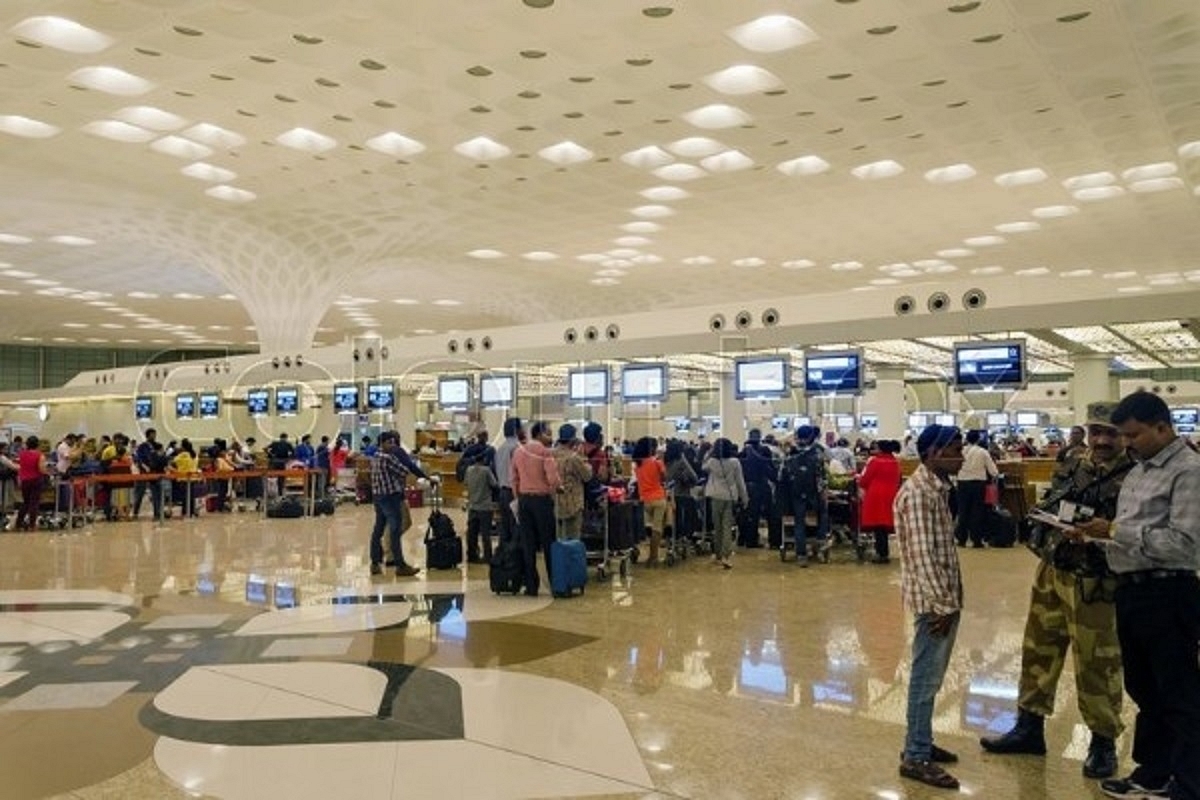News Brief
Government Directs Mumbai Airport To Reduce Number Of Scheduled Flights, Here's Why

Passengers at Mumbai International Airport (File Photo) (Representative Image)
The Union government has instructed Mumbai airport to reduce the number of scheduled flights and limit the movement of business jets during peak hours to alleviate congestion and enhance on-time departures.
This directive will necessitate airlines to cut approximately 40 flights, impacting operations for private jets frequently used by some of the country's prominent business entities.
The Airport Authority of India, responsible for air navigation services, has urged the airport to decrease aircraft movements from 46 to 44 during peak hours and from 44 to 42 during off-peak periods, as per a report by The Economic Times.
The mandate to reduce flight numbers will compel airlines to trim around 40 flights starting this week.
IndiGo, operating the largest number of flights, will need to cut 18 flights, while the Air India group, including Vistara, will have to reduce 17 flights.
At the same time, the restriction on the operation of business jets has been extended from four hours to eight hours, eliciting objections from leading corporate entities such as Reliance Industries, JSW and Mahindra Group.
As the second busiest airport in the country after Delhi, Mumbai airport experiences significant traffic from business jets. Despite having a single runway, it handles more flights than any other airport, with December recording its highest monthly traffic of 4.88 million passengers.
According to the same report, this decision followed concerns raised by Civil Aviation Minister Jyotiraditya Scindia regarding declining on-time departure rates at the airport.
Senior air traffic controllers attributed the main cause of delays to airlines overscheduling flights amidst a surge in air travel demand this year.
Government officials explained that runway capacity encompasses various factors such as infrastructure availability and aircraft turnaround time. They also noted that airlines' overscheduling and unscheduled movements, particularly by government and business jets, contribute to flight delays.
Additionally, the government has advised airports to account for unforeseen circumstances when forecasting peak-hour capacity starting from the upcoming summer schedule.
Meanwhile, airline network planners have expressed concerns over sudden flight cancellations impacting their ability to redeploy aircraft, resulting in financial losses and compensation payouts to passengers.
Support Swarajya's 50 Ground Reports Project & Sponsor A Story
Every general election Swarajya does a 50 ground reports project.
Aimed only at serious readers and those who appreciate the nuances of political undercurrents, the project provides a sense of India's electoral landscape. As you know, these reports are produced after considerable investment of travel, time and effort on the ground.
This time too we've kicked off the project in style and have covered over 30 constituencies already. If you're someone who appreciates such work and have enjoyed our coverage please consider sponsoring a ground report for just Rs 2999 to Rs 19,999 - it goes a long way in helping us produce more quality reportage.
You can also back this project by becoming a subscriber for as little as Rs 999 - so do click on this links and choose a plan that suits you and back us.
Click below to contribute.
Latest